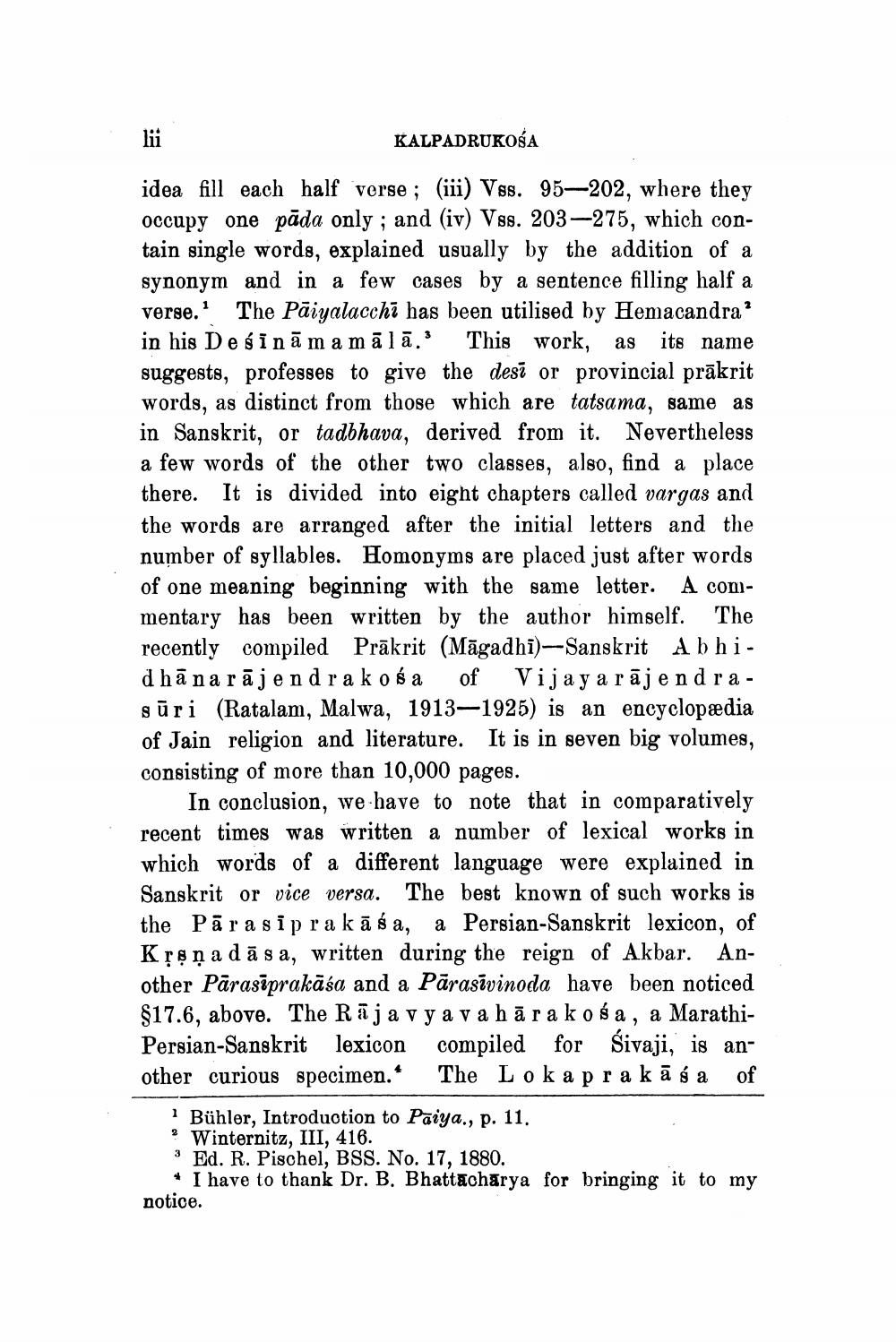________________
lii
KALPADRUKOSA
idea fill each half verse; (iii) Vss. 95-202, where they occupy one pada only; and (iv) Vss. 203-275, which contain single words, explained usually by the addition of a synonym and in a few cases by a sentence filling half a verse. The Paiyalacchi has been utilised by Hemacandra' in his Deśīnāmamālā.3 This work, as its name suggests, professes to give the desi or provincial prakrit words, as distinct from those which are tatsama, same as in Sanskrit, or tadbhava, derived from it. Nevertheless a few words of the other two classes, also, find a place there. It is divided into eight chapters called vargas and the words are arranged after the initial letters and the number of syllables. Homonyms are placed just after words of one meaning beginning with the same letter. A commentary has been written by the author himself. The recently compiled Prakrit (Magadhi)-Sanskrit Abhidhanarajendrakosa of Vijayarajendrasūri (Ratalam, Malwa, 1913-1925) is an encyclopædia of Jain religion and literature. It is in seven big volumes, consisting of more than 10,000 pages.
In conclusion, we have to note that in comparatively recent times was written a number of lexical works in which words of a different language were explained in Sanskrit or vice versa. The best known of such works is the Parasiprakāśa, a Persian-Sanskrit lexicon, of Kṛṣṇadasa, written during the reign of Akbar. Another Parasiprakasa and a Parasivinoda have been noticed §17.6, above. The Raja vya va harakosa, a MarathiPersian-Sanskrit lexicon compiled for Śivaji, is another curious specimen.* The Loka prakāśa of
1
1 Bühler, Introduction to Paiya., p. 11. Winternitz, III, 416.
2
Ed. R. Pischel, BSS. No. 17, 1880.
I have to thank Dr. B. Bhattacharya for bringing it to my
notice.
3




